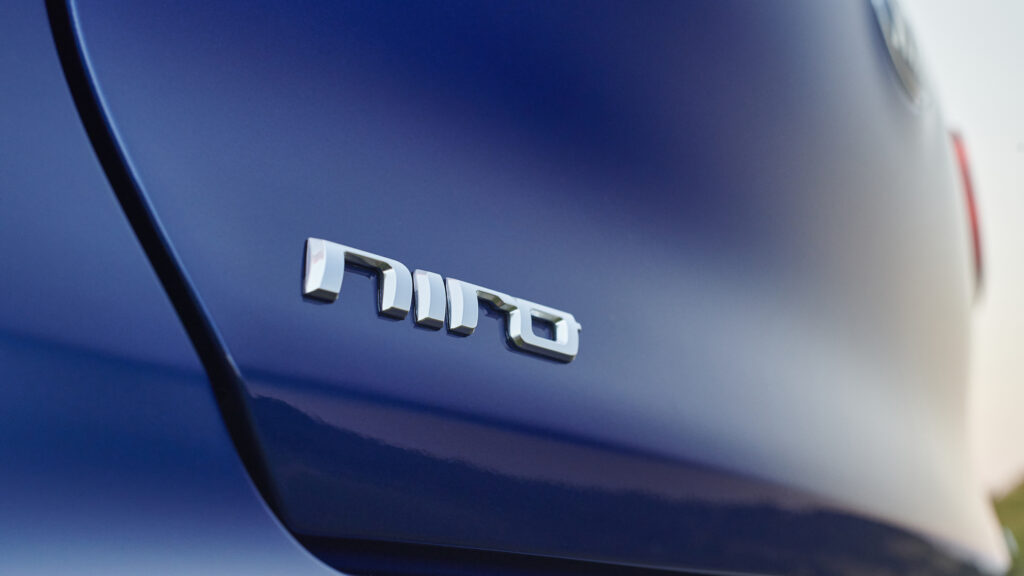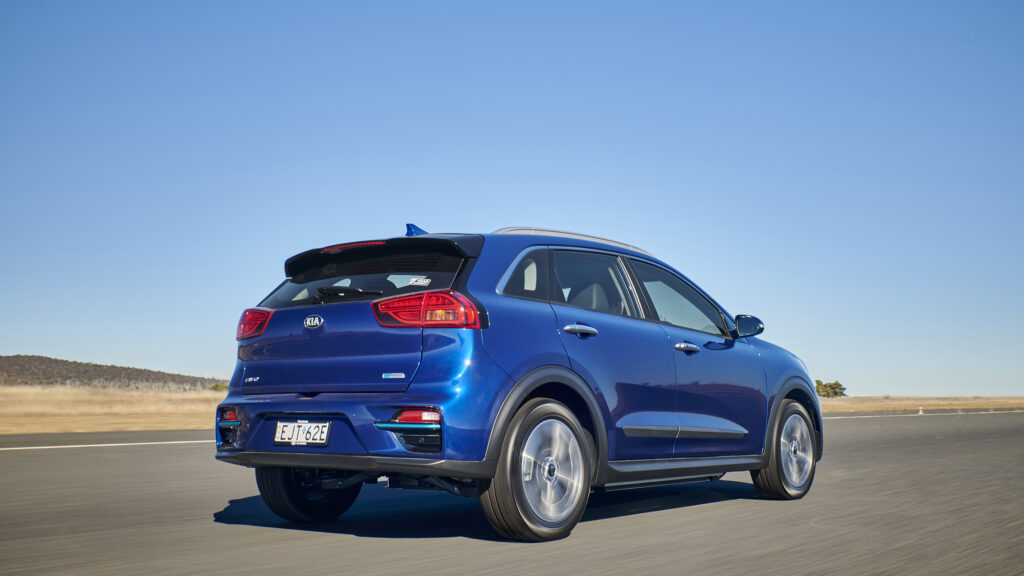2021 Kia Niro Electric review
It’s taken a while, but Kia finally has an EV in its stables. The Niro compact SUV is Kia’s first electric vehicle, albeit one that’s been around globally for years. More than that, it’s a trio of models that utilise electric motors to reduce (or eliminate) fuel use.
As well as the EV version tested here, known simply as the Niro Electric, there’s also a Niro Hybrid (or HEV) and Niro PHEV (plug-in hybrid electric vehicle).
READ MORE: Pricing and full details: Kia Niro lands in Australia
Being part of the Hyundai Group, the Niro utilises components from its sister brand. In the case of the Niro Electric it has the same battery pack and electric motor as the Hyundai Kona Electric.

The Niro has been on Kia Australia’s wish list for years, but has been delayed coming here due to demand in parts of the world that have strict emissions standards.

As such it’s in the twilight of its life, with only a year left to run. Around the middle of 2022 the Niro that’s launching today will be no longer.
Value: Kia Niro Electric
Kia had initially said it had visions of stealing some of the sales success from the Toyota RAV4 Hybrid.
But a starting price of $41,990 drive-away means it’ll be more of a niche player. Kia is only forecasting around 100 sales per month across the Hybrid, PHEV and Electric variants.
It’s the Hybrid expected to account for 70 percent of those sales, with the PHEV taking just 10 percent and the Electric 20 percent.

The PHEV starts $49,990 while the Electric is a big jump up to $67,490.
As with the Hybrid and the PHEV, the Electric is available as an S or better equipped Sport model.
Both get some unique styling elements compared with other variants. The grille is mostly blanked out, for example, maximising aerodynamics and giving it a distinctive look. There are also striped blue highlights on the front and rear bumpers. Plus, while the Electric shares other Niro hues, it’s also available in a deep blue colour called Yacht Blue.
The S get an 8.0-inch infotainment screen, 17-inch alloy wheels, partial leather trim, three USB charge points, digital radio tuning, auto emergency braking (AEB), adaptive cruise control, driver attention monitor, auto headlights and auto wipers.
There’s also wireless Apple CarPlay and Android Auto, although that reverts to wired CarPlay and Auto once you step up to the Niro Electric Sport ($70,990), which also gets embedded satellite-navigation (the lesser version of connectivity is apparently due to a dispute between Kia and the tech giants over which navigation system is used as the default).
The Sport also gets LED headlights, alloy pedals, a larger 10.25-inch infotainment screen and fake leather trim.

Notable omissions include a sunroof, head-up display and wireless phone charging.
Inside the Niro Electric
It’s basic done mostly well in the Niro Electric, but it certainly doesn’t create any “wow” moments in the cabin, especially for the price.
People with $70K to spend on a car will notice the finishes and presentation is below that of alternatives for similar money. It’s even below the latest and greatest from Kia (the Sorento and Carnival are among the best mainstream vehicles for finishes and attention to detail).
Again, it’s basic.

The Sport’s black panel across the dash and the larger digital screen team with some silver highlights to liven things up, but it can’t hide the garden variety finishes that are plentiful throughout.
A circular gear selector (it works well) and electronic park brake make the centre console more modern than elsewhere, while also allowing for good cupholder and odds-and-ends space. A small shelf mid-way up the dash is also handy.
While the Niro Electric shares its platform and electrical components with the Hyundai Kona Electric, there are size differences. The Niro is slightly longer, for example, and gets another 100mm between the front and rear wheels.
So while it’s a compact SUV it has a respectably large 451-litre boot (there’s no spare tyre, only a repair kit and the charging cable beneath the floor). The luggage cavity is quite deep and deceptively spacious.

Headroom is decent throughout and those in the rear have OK legroom if the people up front don’t have their seats all the way back. At least those in the rear get air vents to keep things nicely ventilated, although there are no USB plugs out back,.
The feet of those in the rear will be slightly higher than usual, though, a result of the battery pack that takes up a fair chunk of the floor.
Performance and efficiency
The Niro Electric has a single electric motor driving the front wheels.
It makes a maximum 150kW and 395Nm, and it’s that latter figure that provides the urge that makes the Electric a handy around-town device.

Dial up Sport mode and it’s lively off the line, the touchy throttle response almost too sensitive.
Claimed electricity use is 15.9kWh/100km and we managed to sneak it below that occasionally, all the while still enjoying the perky response.
The WLTP range is 455km and it seems thoroughly achievable.
Charging the Niro Electric
The Niro Electric has a 64kWh battery pack sitting beneath the floor. It eats into foot space every so slightly due to the thickness of the battery pack, plus you can see the metal protection underneath the car.

AC charging can be done at up to 7.2kW, providing a full charge in about nine-and-a-half hours. Plug it into a 2.3kW home powerpoint and the empty-to-full charge takes more like 29 hours.
Those in more of a hurry can make use of the 100kW peak DC charging rate (through a CCS combo plug), which allows a 0-80 percent charge in just under an hour.
The charging port is in the front of the car – it’s a simple push of the small door housed in the grille to click it open – and the Type 2 cable hides under the boot floor.

Ride and handling
Kia makes a big deal of testing and tuning its cars locally for Australian tastes and conditions.
But the Niro missed the boat – figuratively and literally.

Blame it on the delays in getting the car to Australia and challenges regarding Covid lockdowns.
So our cars get the tune developed for Niros going to Europe, which works fine, albeit lacking some finesse in the blend of comfort and control.
Better control when rebounding from big bumps would be nice, but there’s otherwise a crispness to the way it steers and well-mannered reactions mid-corner.

Michelin tyres are well suited to the Electric, although they’ll yelp occasionally if you’re too greedy on the accelerator at slow speeds.
Talking point
The Niro Electric has a futuristic fake sound emitted outside the car to warn pedestrians of its imminent arrival.
It’s called VESS (Virtual Engine Sound System) and is quite noticeable in the cabin if you’re stopped or crawling in sluggish traffic, the hum sometimes getting annoying.
Fortunately it can be switched off with a button to the right of the steering wheel.
Safety
The Niro Electric gets seven airbags, seatbelt reminders for all five seats, autonomous emergency braking (AEB), and a driver attention monitoring system.
But there’s no speed sign recognition, and blind spot warning isn’t available on the base S model, only coming on the Sport tested here.
While hybrid and PHEV Niros get a five-star ANCAP safety rating (albeit earned in 2016, when the five-star requirements weren’t as strict), there’s no rating for the Electric.

Verdict
The Niro Electric is more a learning exercise for Kia Australia before it gets more serious later in 2021 (or early 2022) with the EV6 and the EV family that car will spawn. It’s a way to get used to the technology, ready the dealer network for an influx of EVs and learn a bit about the types of buyers who want a Kia EV.
As a result, Kia isn’t expecting big things from a sales perspective, with just 250 slated between now and mid-2022.
That’s lucky, because while it’s a new car for Australians it’s not as fresh as some, and the circa-$70K price tag makes it one for those chasing a competent but basic EV capable of usefully big distances between charges.
2021 Kia Niro Electric specifications
Price: $67,490 drive-away (S), $70,990 drive-away (Sport)
Basics: EV, 5 seats, 5 doors, compact SUV, FWD
Range: 455km (WLTP)
Battery capacity: 64kWh
Battery warranty: 7 years/150,000km; 75 percent guarantee
Energy consumption: 15.9kWh/100km
Motors: 1 front 150kW/395Nm
AC charging: 7.2kW, Type 2 plug
DC charging: 100kW, CCS combo plug
0-100km/h: NA




